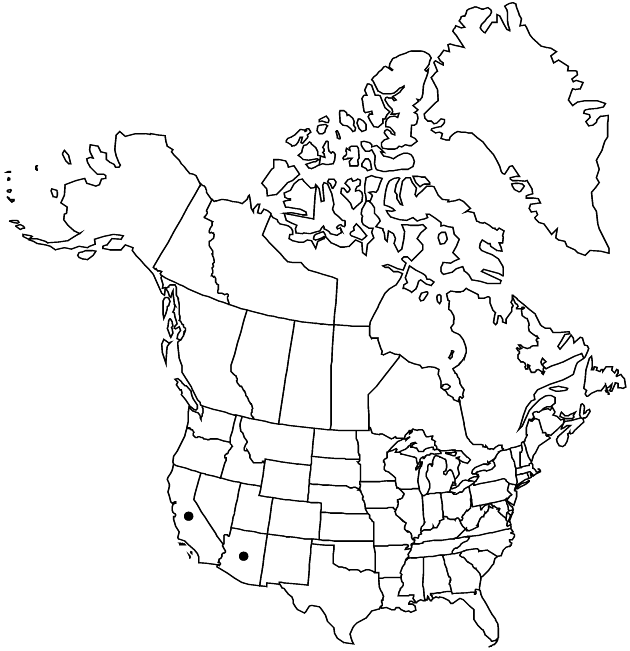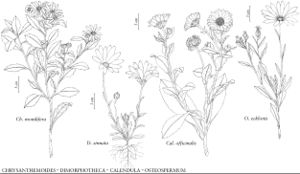Difference between revisions of "Dimorphotheca sinuata"
in A. P. de Candolle and A. L. P. P. de Candolle, Prodr. 6: 72. 1838.
FNA>Volume Importer |
FNA>Volume Importer |
Revision as of 18:37, 24 September 2019
Annuals, 5–30+ cm. Leaf blades narrowly oblong or oblanceolate to linear, 10–50(–100+) × 2–20(–30+) mm, margins usually sinuately denticulate, sometimes serrate or entire, rarely pinnatifid. Peduncles (2–)5–15+ cm. Phyllaries 6–12+ mm. Ray corolla laminae abaxially yellow to orange (often marked with purple), adaxially mostly yellow to orange (sometimes purplish at bases and/or apices), 15–20(–30+) mm. Disc florets 15–50+; corollas yellow to orange, usually purplish distally, 4–5 mm (lobe apices acute, terete, or dilated). Ray cypselae 4–5 mm; disc cypselae 6–8 mm. 2n = 18.
Phenology: Flowering (Dec–)Mar–May.
Habitat: Disturbed places
Elevation: 0–1000 m
Distribution

Ariz., Calif., South Africa.
Discussion
Plants treated here (and in horticultural trade) as Dimorphotheca sinuata are sometimes called “D. aurantiaca Hort., non de Candolle” and/or “D. calendulacea Harvey.” But for corolla colors, plants of D. sinuata are not easily distinguished from plants called D. pluvialis. They may prove to be better considered a color form of D. pluvialis.
Selected References
None.
